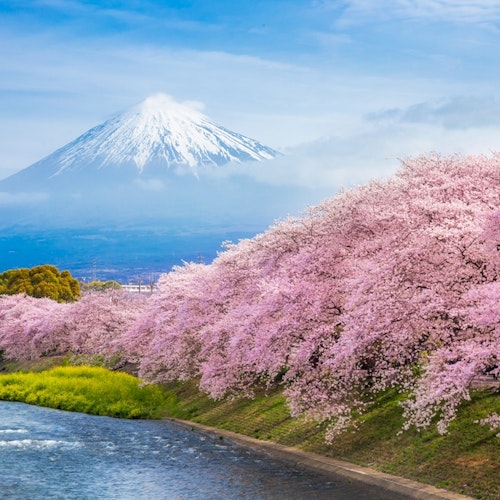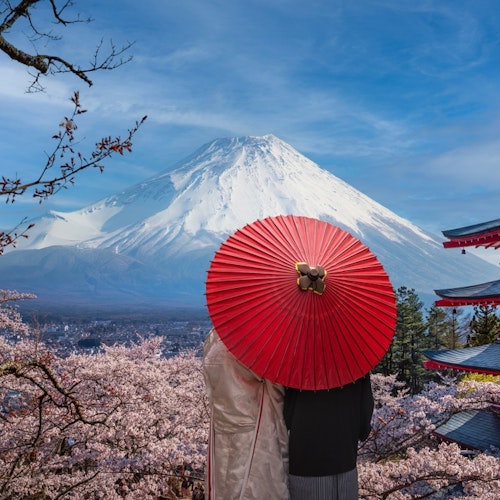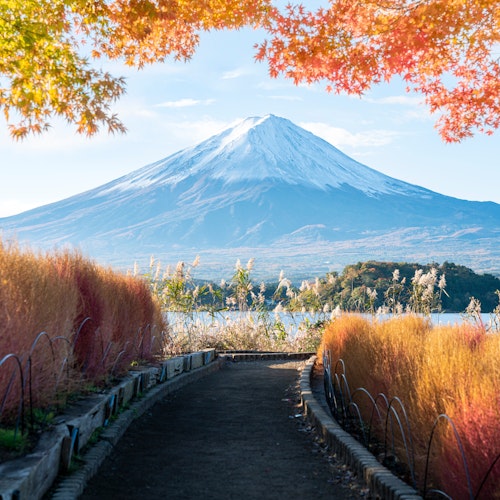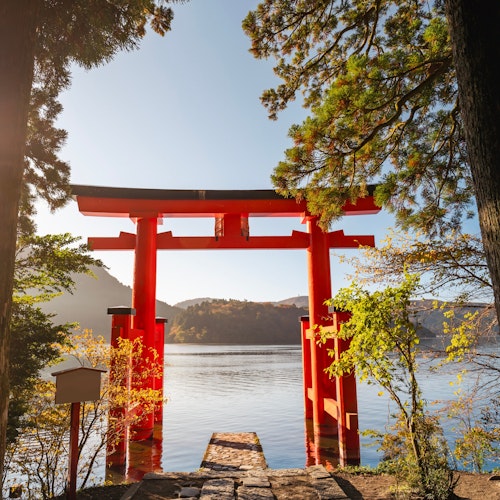
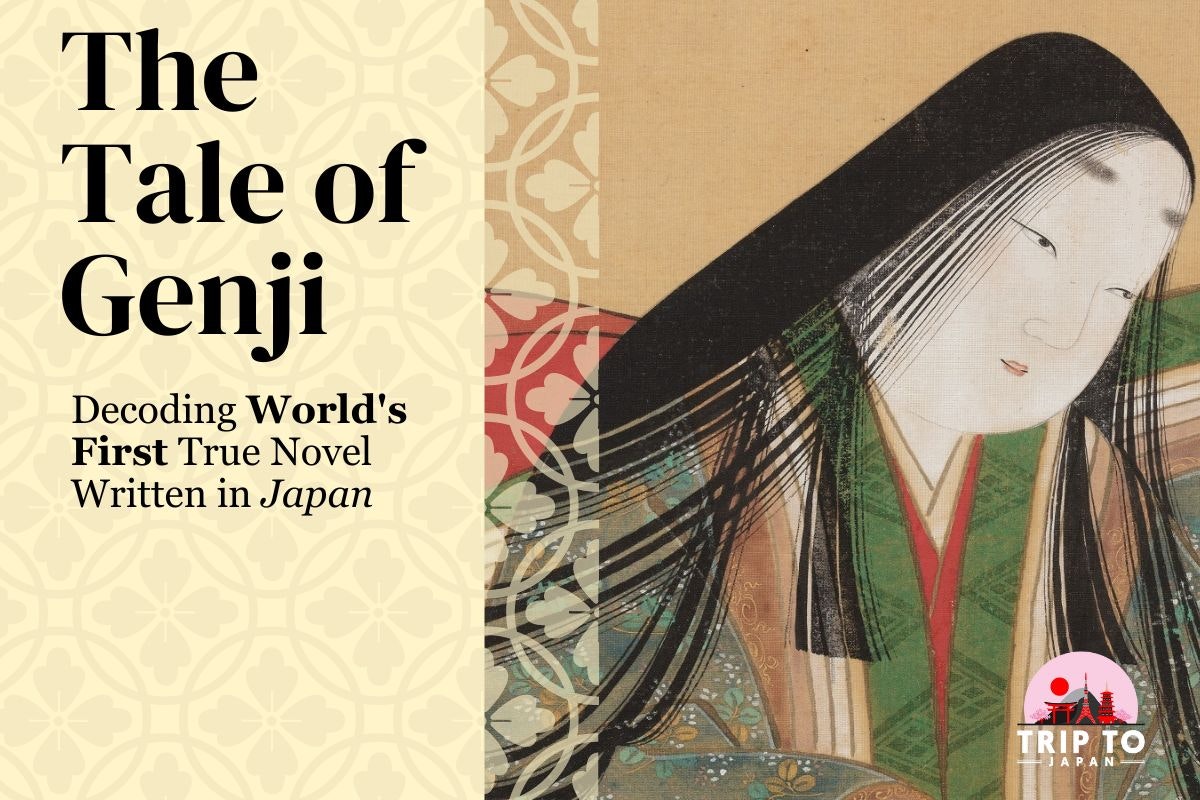
นวนิยายเรื่องแรกของโลก "The Tale of Genji" 源氏物語 เขียนขึ้นเมื่อ 1,000 ปีก่อนในญี่ปุ่น! โพสต์นี้โดย ทริปญี่ปุ่น ให้ความกระจ่างเกี่ยวกับนวนิยายคลาสสิกของญี่ปุ่นเรื่อง The Tale of Genji โดย Murasaki Shikibu ที่เขียนขึ้นในศตวรรษที่ 11 ไม่ใช่แค่เรื่องราวชีวิตและความรักของผู้ชายคนหนึ่งเท่านั้น การสังเกตอย่างพิถีพิถัน ของชีวิตในศาลในสมัยก่อน
ดําดิ่งสู่โลกที่อยู่ห่างออกไปนับพันปี แต่คุ้นเคยอย่างน่าขนลุกในความหลงใหลและแรงบันดาลใจของมนุษย์ The Tale of Genji พาเราไปสู่การเดินทางที่ดื่มด่ําสู่ใจกลางของญี่ปุ่นยุคเฮอันช่วงเวลาแห่งชีวิตในราชสํานักที่สง่างามการพัฒนาทางวัฒนธรรมที่ลึกซึ้งและการซ้อมรบทางการเมืองที่ซับซ้อน
ผลงานชิ้นเอกในศตวรรษที่ 11 นี้มักถูกยกย่องว่าเป็น นวนิยายเรื่องแรกของโลกให้การเล่าเรื่องที่ละเอียดถี่ถ้วนที่อยู่เหนือกาลเวลา โดนใจผู้อ่านในปัจจุบัน ด้วยการเล่าเรื่องที่เข้มข้น นวนิยายญี่ปุ่นเรื่องนี้ยังคงเป็นคลาสสิกที่ตรงต่อเวลา
โพสต์นี้มีจุดมุ่งหมายเพื่อสร้างประสบการณ์ที่มีข้อมูลสําหรับคุณ เราจะพูดถึงนวนิยาย ผู้แต่ง ตัวละครนํา เก็นจิ และวิธีที่นวนิยายเรื่องนี้ยังคงดําเนินชีวิตผ่านวัฒนธรรมป๊อป
มาเจาะลึกเทพนิยายของเก็นจิกันเถอะ!
แม้ว่านวนิยายเรื่องนี้จะเป็นผลงานนิยายเชิงจินตนาการ แต่ก็แสดงให้เห็นทั้งแง่มุมเชิงพรรณนาและจิตวิทยาของชีวิตอย่างชัดเจนและแม่นยํา
มันเจาะลึกสังคม จิตวิญญาณ และบุคคลด้วยความเข้าใจที่น่าทึ่ง โดยจับสาระสําคัญของสิ่งต่าง ๆ นักเขียนมากความสามารถ Lady Murasaki ได้สร้างนวนิยายเรื่องนี้อย่างอิสระเพื่อเป็นผลงานชิ้นเอกทางวรรณกรรมที่แท้จริง
ผู้เชี่ยวชาญที่ Trip To Japan ยังพบว่านวนิยายเรื่องนี้ทําให้ผู้อ่านมีความเข้าใจอย่างลึกซึ้งเกี่ยวกับ transcience ของความสุขทางโลกและความโศกเศร้าโดยธรรมชาติในกาลเวลา
ดิ เรื่องราวของเก็นจิ (源氏物語 )เป็นนวนิยายมหากาพย์ญี่ปุ่นที่ติดตามชีวิตและความรักของเจ้าชายเก็นจิผู้ส่องแสงบุตรชายของจักรพรรดิคิริสึโบะ เป็นที่รู้จักกันในนาม "Genji Monogatari" ในภาษาญี่ปุ่น
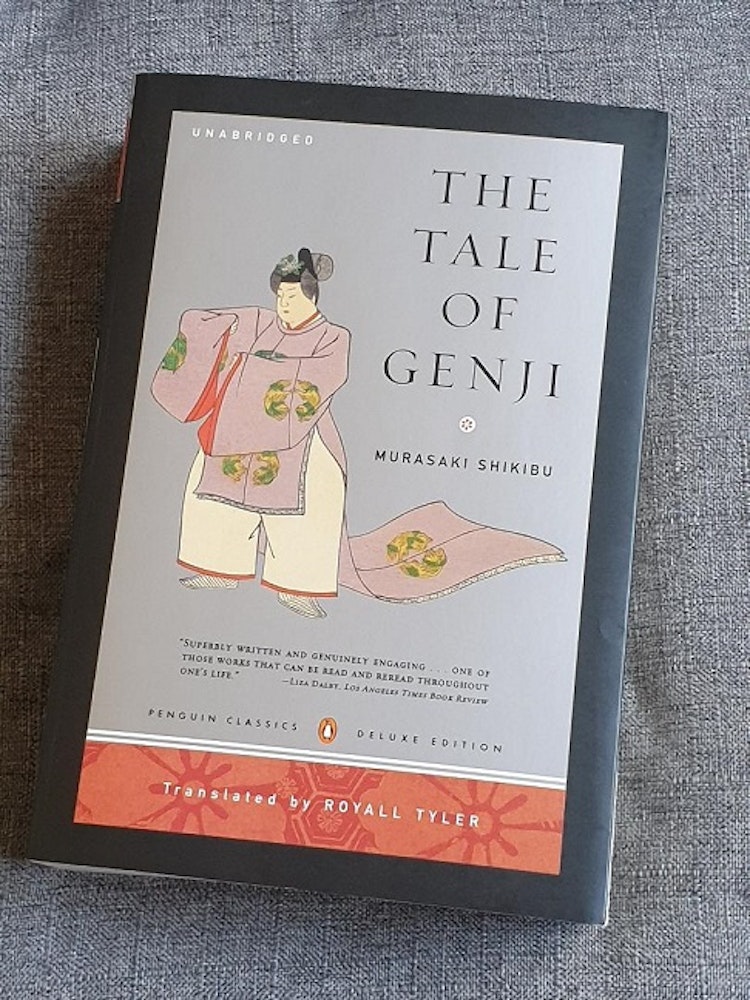
มันครอบคลุมในช่วงเวลาของ 60 ปี, สานเรื่องราวที่ซับซ้อนและซับซ้อนซึ่งสํารวจธีมของความงามความรักความหึงหวงและความสูญเสีย นวนิยายเรื่องนี้แบ่งออกเป็น 54 บทด้วย 800 บทกวีแทรก แต่ละคนมุ่งเน้นไปที่ตัวละครและเหตุการณ์ที่แตกต่างกัน ซึ่งทั้งหมดเชื่อมโยงกับชีวิตของเก็นจิ
เก็นจิ, เดิมเขียนด้วยภาษาโบราณที่มีรูปแบบบทกวี เป็นเรื่องท้าทายที่จะอ่านโดยไม่ต้องศึกษาเฉพาะทาง อย่างไรก็ตามมันไม่ได้จนกระทั่งต้นศตวรรษที่ 20 ที่กวี อากิโกะ โยซาโนะ ฉบับแปล เก็นจิ เป็นภาษาญี่ปุ่นสมัยใหม่ การแปลภาษาอังกฤษครั้งแรกพยายามในปี พ.ศ. 2425 โดย สุเอมัตสึ เคนโจ.
นวนิยายเรื่องนี้มีโครงสร้างแบบดั้งเดิมด้วย สามส่วน สองส่วนแรกสํารวจชีวิตของเก็นจิ ในขณะที่ส่วนสุดท้ายมุ่งเน้นไปที่ปีแรก ๆ ของลูกหลานที่มีชื่อเสียงของเก็นจิ Niou และ Kaoru นอกจากนี้ยังมีบทเฉพาะกาลที่สั้นกว่าสองสามบท ซึ่งบางครั้งพิจารณาแยกกัน และการประพันธ์ของพวกเขาถูกตั้งคําถามเป็นครั้งคราว
มุราซากิ ชิกิบุสตรีราชสํานักชาวญี่ปุ่น ได้เขียนผลงานชิ้นนี้ขึ้นในศตวรรษที่ 11 ซีอี
Murasaki Shikibu หรือที่รู้จักในชื่อ Lady Murasaki เป็นหนึ่งใน สุภาพสตรีในราชสํานักเฮอัน เธอเขียนผลงานชิ้นเอก "Genji Monogatari" เธอเกิดในปี ค.ศ. 798 กับบิดาที่รับใช้ในราชสํานัก มุราซากิกลายเป็นกวีและนักเขียนผู้ยิ่งใหญ่ เธอถึงแก่กรรมในปี ค.ศ. 1014
ข้อเท็จจริงที่น่าสนใจเกี่ยวกับเธอคือ Murasaki Shikibu เป็นเพียงชื่อที่สื่อความหมายและ ชื่อเดิมของเธอยังไม่ทราบ
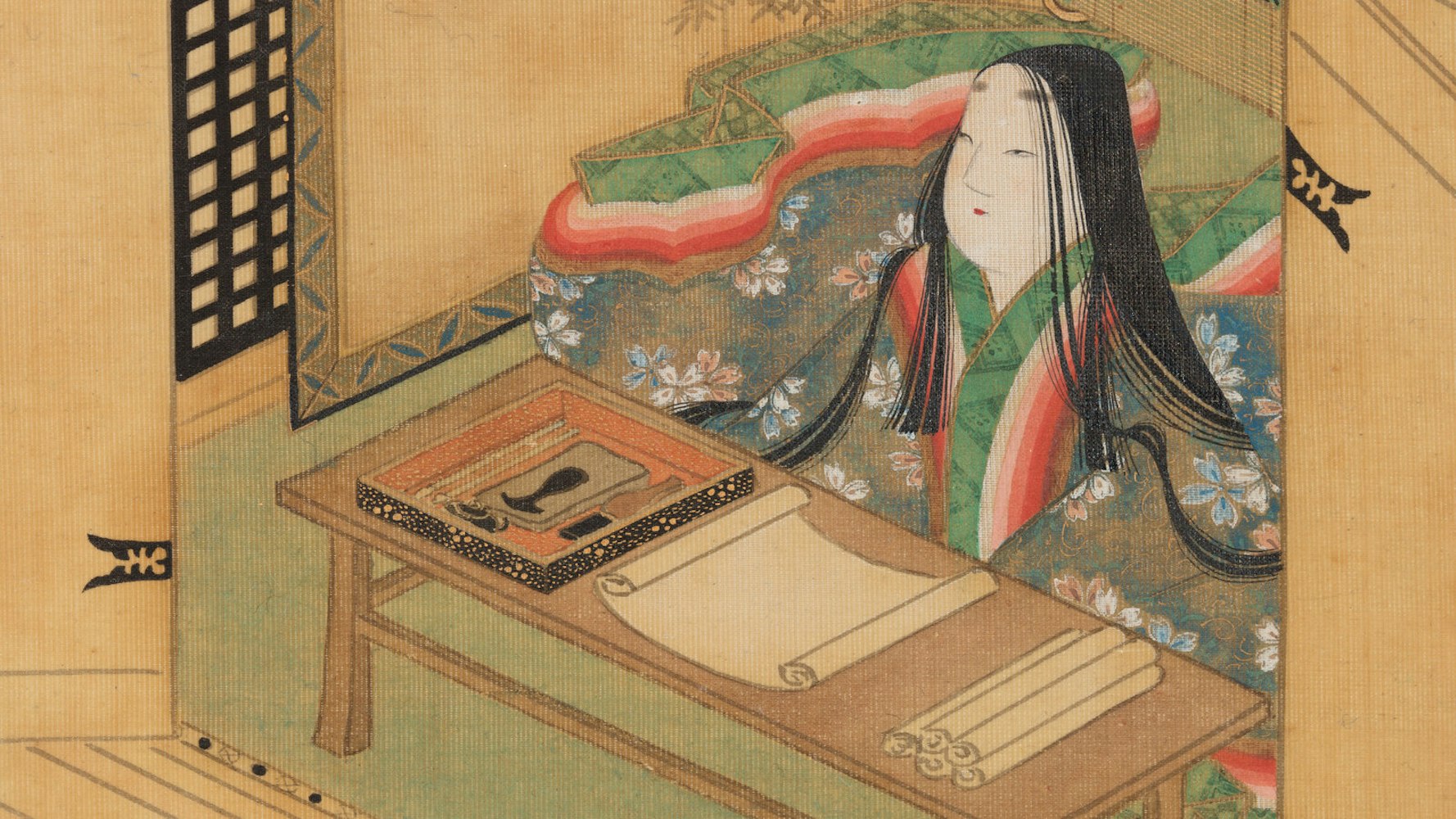
เชื่อกันว่าเธอได้ชื่อมุราซากิมาจากตัวเอกของนวนิยายของเธอ ชื่อชิกิบุหมายถึงบทบาทของพ่อของเธอในสํานักพิธีกรรม
คุณรู้หรือไม่ - เพื่อเป็นการยกย่อง Murasaki Shikibu ธนาคารกลางญี่ปุ่นออกธนบัตร 2,000 เยน นําเสนอฉากที่น่าหลงใหลจากนวนิยายที่ได้รับแรงบันดาลใจจากม้วนมือภาพประกอบในศตวรรษที่ 12
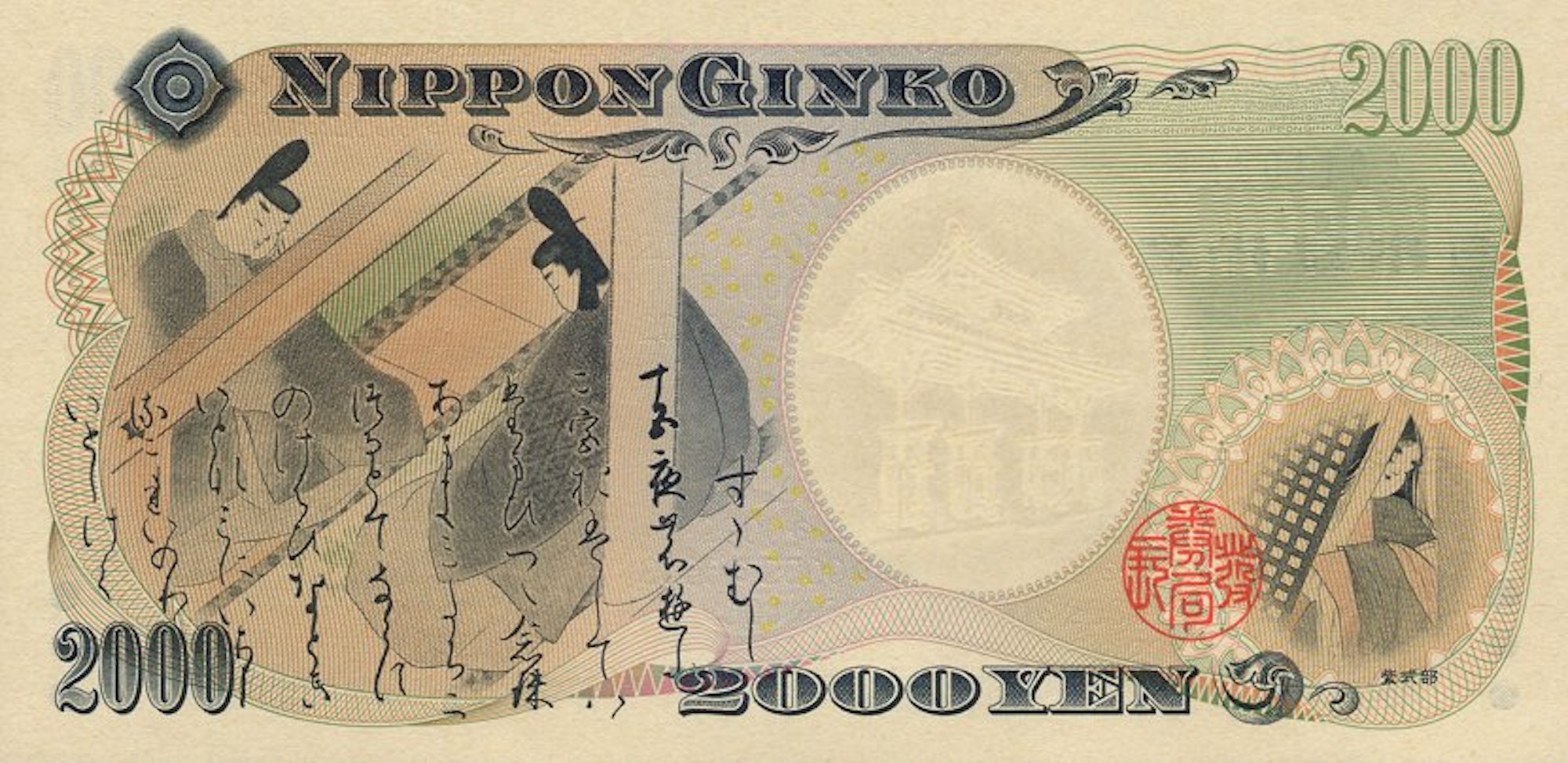
เธอเกิดในตระกูลฟูจิวาระที่มีอิทธิพลน้อยกว่า มุราซากิในวัยเยาว์ได้รับการศึกษาที่ครอบคลุมรวมถึงการเรียนภาษาจีนซึ่งส่วนใหญ่เป็นโดเมนของผู้ชาย เธอเข้าพิธีวิวาห์กับ Fujiwara Nobutaka ญาติห่าง ๆ ที่แก่กว่ามากซึ่งเธอมีลูกสาวคนหนึ่ง
ตัวเอกของนวนิยายเรื่องนี้ เก็นจิ, เป็นพระราชโอรสองค์ที่สองของจักรพรรดิคิริสึโบะและนางสนมระดับต่ําเลดี้โคกิเด็น เมื่อทราบเกี่ยวกับพ่อแม่ที่แท้จริงของเขา Genji ก็ถูกเนรเทศออกจากวังตามธรรมเนียมของศาล
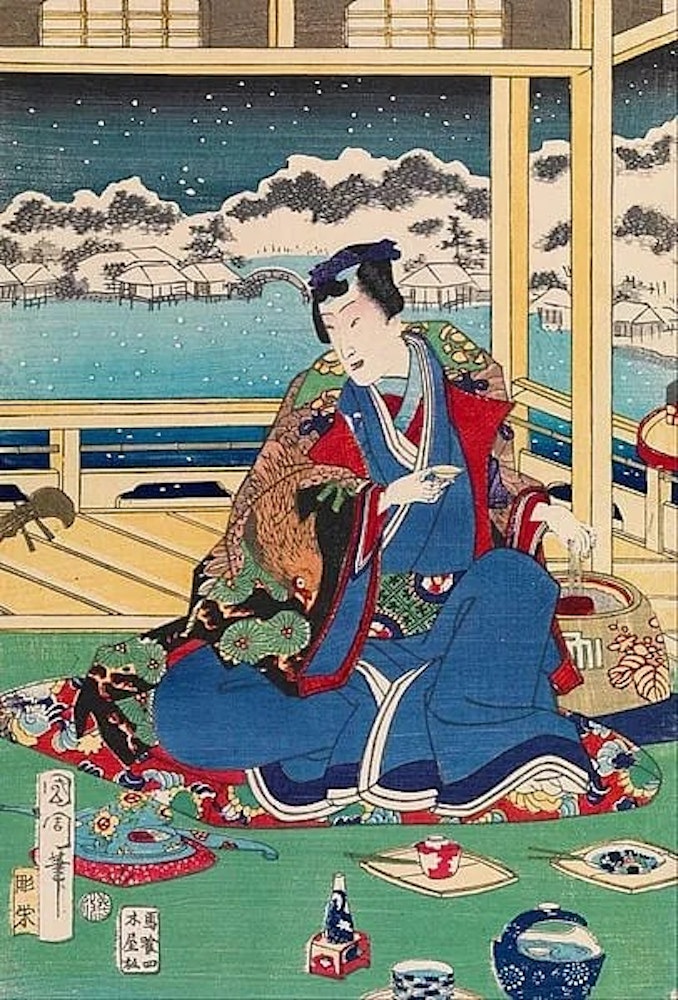
เขากลายเป็นชายหนุ่มที่ห้าวหาญและหล่อเหลาและชอบความโรแมนติก เขามีความสัมพันธ์มากมายกับผู้หญิงที่มียศและภูมิหลังต่างกันซึ่งนําไปสู่ความยุ่งยากทางการเมืองต่างๆ
เก็นจิเป็นที่รู้จักในด้านเสน่ห์ สติปัญญา และความสามารถทางศิลปะของเขา นอกจากนี้เขายังมีความสนใจอย่างลึกซึ้งในพระพุทธศาสนาและบทกวีซึ่งเขามักใช้เพื่อแสดงอารมณ์ของเขา
เกร็ดน่ารู้ - เชื่อกันว่าตัวละครของเก็นจิมีพื้นฐานมาจากบุคคลในประวัติศาสตร์ที่แท้จริง มินาโมโตะโนะโทรุ, ซึ่งเป็นสมาชิกของตระกูลฟูจิวาระและยังเป็นที่รู้จักจากการแสวงหาความโรแมนติกของเขา
เรื่องราวของเก็นจิเขียนขึ้นในสมัยเฮอัน ซึ่งเป็นช่วงเวลาแห่งความเจริญรุ่งเรืองทางวัฒนธรรมและศิลปะ นวนิยายเรื่องนี้มักถูกมองว่าเป็นภาพสะท้อนของชีวิตในราชสํานักและขนบธรรมเนียมในยุคนี้
นอกจากนี้ยังเน้นแง่มุมต่างๆ ของวัฒนธรรมญี่ปุ่น เช่น กวีนิพนธ์วากะ อิทธิพลทางพุทธศาสนา และโครงสร้างลําดับชั้นที่ซับซ้อนของสังคม
เป็นเวลาหลายศตวรรษ เก็นจิ ได้รับการยกย่องว่าเป็นหนึ่งในผลงานวรรณกรรมคลาสสิกของญี่ปุ่นที่ยิ่งใหญ่ที่สุด ยังคงได้รับการศึกษาและชื่นชมจากนักวิชาการ ผู้เขียน และผู้อ่านทั่วโลก
คุณรู้หรือไม่ - Google ฉลองครบรอบ 1,000 ปีของ Tale of Genji เมื่อวันที่ 1 พฤศจิกายน 2008
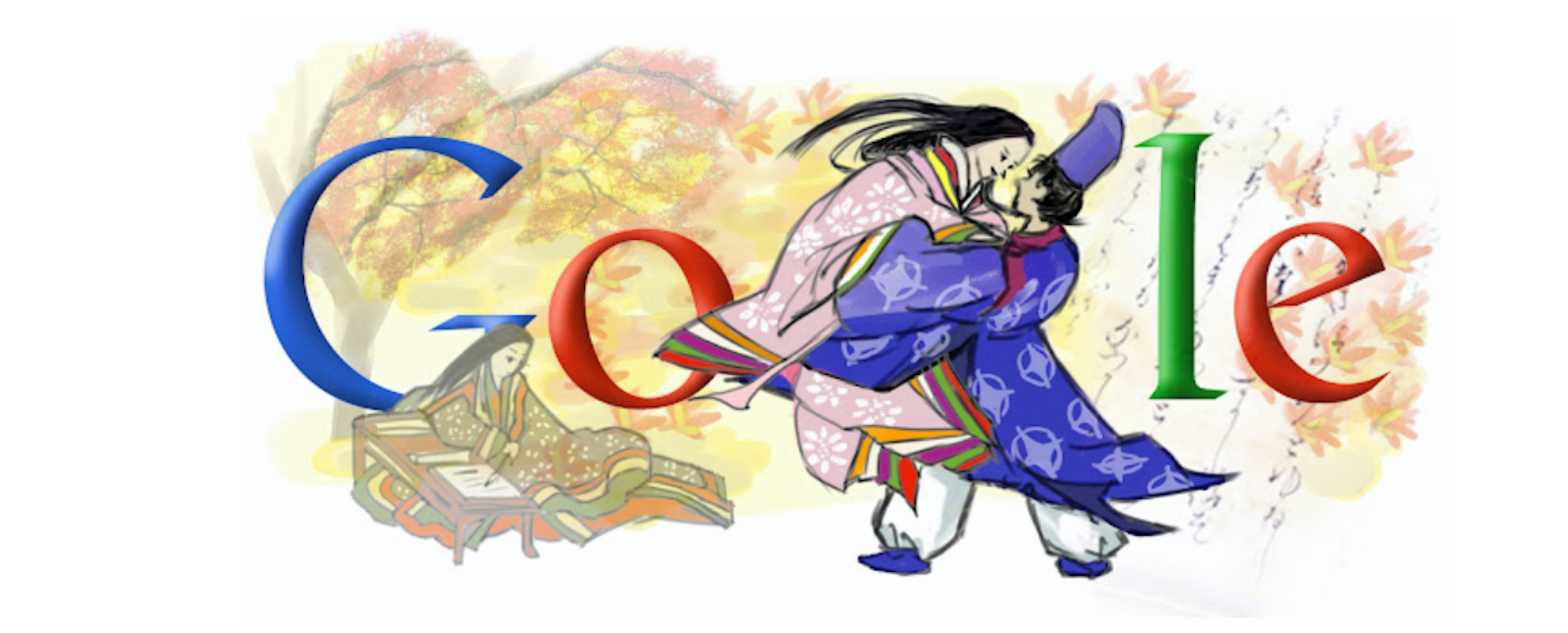
นี่คือบทสรุปนวนิยายโดยย่อของ The Tale of Genji เพื่อให้ง่ายขึ้นสําหรับคุณเราได้จัดทําคําแนะนําพร้อมเหตุการณ์สําคัญทั้งหมดรวมอยู่ด้วย
นวนิยายเริ่มต้นด้วย การประสูติของเจ้าชายเก็นจิ พระราชโอรสของจักรพรรดิคิริสึโบะ และนางสนมระดับล่าง เลดี้โคกิเด็น
เก็นจิซึ่งมีชื่อเสียงในด้านเสน่ห์และความสามารถอันน่าทึ่งของเขา เยาวชนในราชสํานัก ดื่มด่ํากับการแสวงหาความโรแมนติกและกระตุ้นทั้งความชื่นชมและความหึงหวง
เรื่องราวพลิกผันอย่างมากเมื่อเก็นจิเมื่อพ่อของเขาเสียชีวิต ถูกลดระดับจากสถานะราชวงศ์ของเขา เนื่องจากการวางแผนพระราชวัง
ชีวิตของเก็นจิยังคงเต็มไปด้วยเรื่องรัก ๆ ใคร่ ๆ ที่เร่าร้อน รวมถึงกับผู้หญิงระดับสูงฟูจิตสึโบะที่ให้กําเนิดลูกชายที่ต่อมากลายเป็น จักรพรรดิเรเซ.
ความพยายามที่โรแมนติกของเก็นจิมักนําไปสู่ความยุ่งยาก รวมถึง การค้นพบลูกลับของเขากับฟูจิตสึโบะ ทําให้เกิดความตึงเครียดทางการเมืองภายในศาล
เรื่องราวยังคงติดตามชีวิตของเก็นจิในขณะที่เขาประสบกับการสูญเสียความรักและการเติบโตทางจิตวิญญาณโดยมีบทต่อ ๆ ไปอุทิศให้กับเขา ความสัมพันธ์กับผู้หญิงคนอื่น ๆ เช่น Lady Rokujo ที่น่าเศร้าและ Lady of the Evening Faces ลึกลับ.
ส่วนที่สองของนวนิยายซึ่งมักเรียกกันว่า "บทอุจิ" เปลี่ยนโฟกัสไปที่ คาโอรุและนีโอ ตัวละครสองตัวที่เชื่อมต่อกับเก็นจิและชีวิตรักที่ซับซ้อนของพวกเขา
นวนิยายเรื่องนี้จบลงด้วยการเล่าเรื่องปลายเปิด โดยปล่อยให้ชะตากรรมของตัวละครเป็นไปตามจินตนาการของผู้อ่าน ซึ่งเป็นคุณลักษณะที่ทําให้ เรื่องราวของเก็นจิ หัวข้อของการอภิปรายและความชื่นชมมานานกว่าพันปี
The Tale of Genji มีอิทธิพลอย่างลึกซึ้งต่อวัฒนธรรมป๊อป เป็นแรงบันดาลใจในการดัดแปลงภาพยนตร์อนิเมะและมังงะหลายครั้ง
นวนิยายเรื่องนี้ได้รับการดัดแปลงเป็นซีรีส์อนิเมะ Genji Monogatari Sennenki (2009), ซึ่งติดตามชีวิตของเก็นจิโดยเน้นที่ความสัมพันธ์ที่โรแมนติกและการเติบโตทางจิตวิญญาณของเขา

มีขั้นต่ํา ห้ามังงะดัดแปลงจากเก็นจิ มังงะชุด Genji Monogatari: Sennen no Nazo เพิ่มองค์ประกอบเหนือธรรมชาติให้กับเรื่องราว ทําให้เป็นนวนิยายต้นฉบับที่ไม่เหมือนใคร มังงะชุดอื่น ๆ ที่ได้รับแรงบันดาลใจจากนวนิยายเรื่องนี้ ได้แก่ Asaki Yumi Mishi (1980) และ Mange โดย Miyako Maki (1988)
มีการดัดแปลงภาพยนตร์หลายเรื่องของนวนิยายเรื่องนี้ รวมถึง The Tale of Genji (1951) กํากับโดย Kōzaburō Yoshimura และ Genji Monogatari: อาซากิ ยูเมะมิชิ (2011), a live-action movie based on the manga adaptation. Another film named O Desejado came out in 1987.
ละครโทรทัศน์เช่น *Asakiyumemishi – The Tale of Genji (2009) และละครคนแสดง - เก็นจิ โมโนกาตาริ สึกิ โนะ นากิ (2010) ยังได้ทํา
แน่นอนว่า Tale of Genji เป็นแรงบันดาลใจให้กับละครเวทีและโอเปร่าหลายเรื่อง ในปี 1981 ละครที่น่าตื่นเต้นเกี่ยวกับ Tale of Genji ดําเนินการโดย Takarazuka Revue ซึ่งเป็นกลุ่มละครเพลงหญิงล้วน มีการแสดงอีกครั้งในปี 2015
นวนิยายเรื่องนี้ได้รับการดัดแปลงเป็นละครคาบูกิในญี่ปุ่นและเป็นแรงบันดาลใจให้กับโอเปร่าหลายเรื่อง ได้แก่ เก็นจิโมโนกาตาริ (1961), ประพันธ์โดย มิโนรุ มิกิ โอเปร่าแสดงครั้งแรกในญี่ปุ่นและต่อมามีการผลิตในต่างประเทศ
Genji Monogatari เป็นหัวข้อของการดัดแปลงภาพประกอบหลายเรื่อง รวมถึงม้วนหนังสือด้วยมือในศตวรรษที่ 12 พร้อมภาพประกอบมากมายที่แสดงถึงฉากต่างๆ จากเรื่องราว
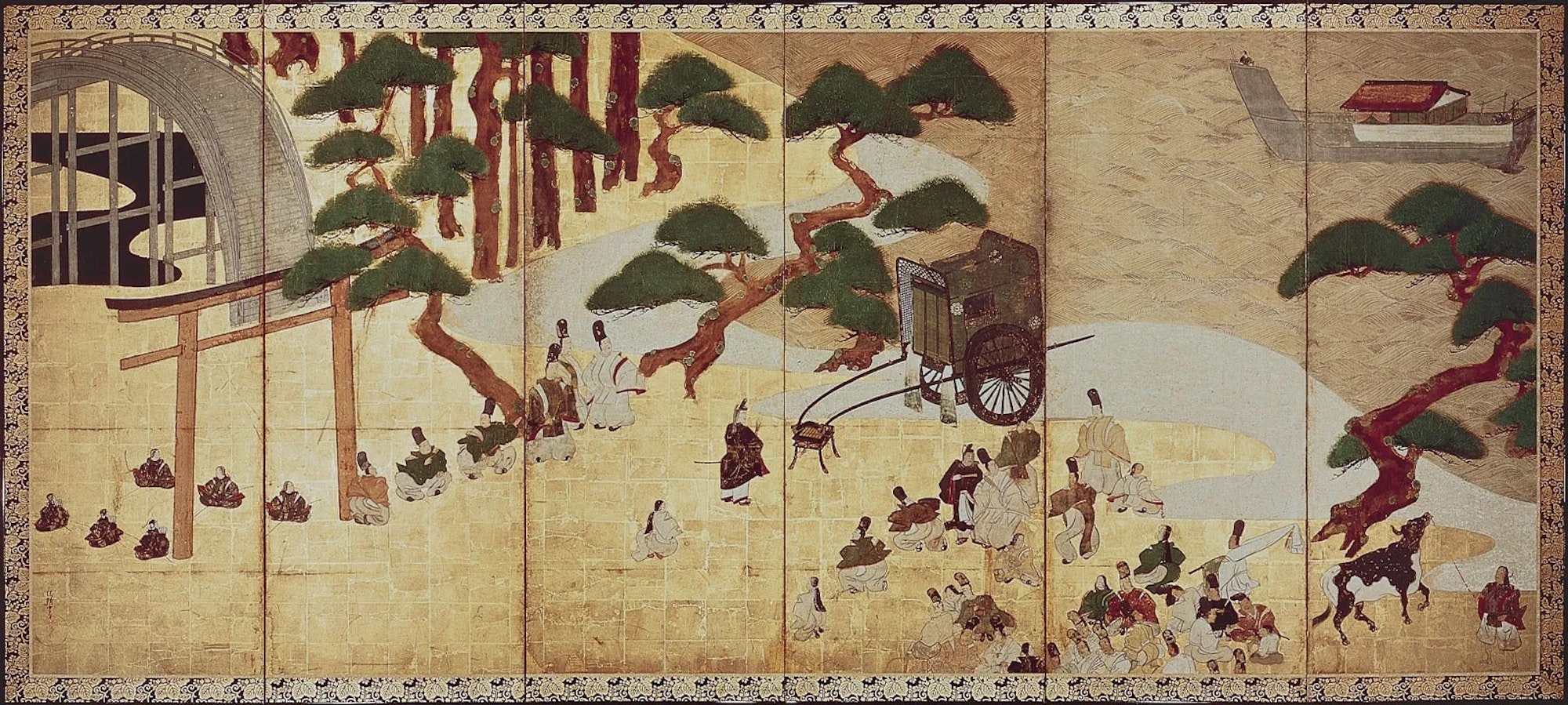
ม้วนนี้เป็นภาพประกอบที่เก่าแก่ที่สุดที่ยังหลงเหลืออยู่ของ "ม้วนรูปภาพ" ของญี่ปุ่นที่รวบรวมงานศิลปะและการประดิษฐ์ตัวอักษรจากชิ้นเดียว ม้วนต้นฉบับคิดว่าประกอบด้วย 10 ถึง 20 ม้วน ครอบคลุมทั้งหมด 54 บท
พิพิธภัณฑ์ศิลปะโทคุกาวะใน นา โก ย่า แสดงม้วนหนังสือสามม้วนที่สืบทอดผ่านสาขาโอวาริของตระกูลโทคุงาวะ นอกจากนี้ ม้วนหนังสือหนึ่งม้วนจากตระกูลฮาจิสุกะยังถูกเก็บไว้ที่พิพิธภัณฑ์โกโตะใน โตเกียว.
ทุกปีในเดือนพฤศจิกายน พิพิธภัณฑ์โทคุกาวะได้จัดแสดงมาตั้งแต่ปี 2001 นิทรรศการใช้เวลาประมาณหนึ่งสัปดาห์
นวนิยายเรื่องนี้ยังเป็นแรงบันดาลใจให้ศาสตราจารย์แห่งมหาวิทยาลัยฮาร์วาร์ด Melissa McCormick ในปี 2018 เธอได้สร้างคู่มือภาพประกอบชื่อ "The Tale of Genji: A Visual Companion"
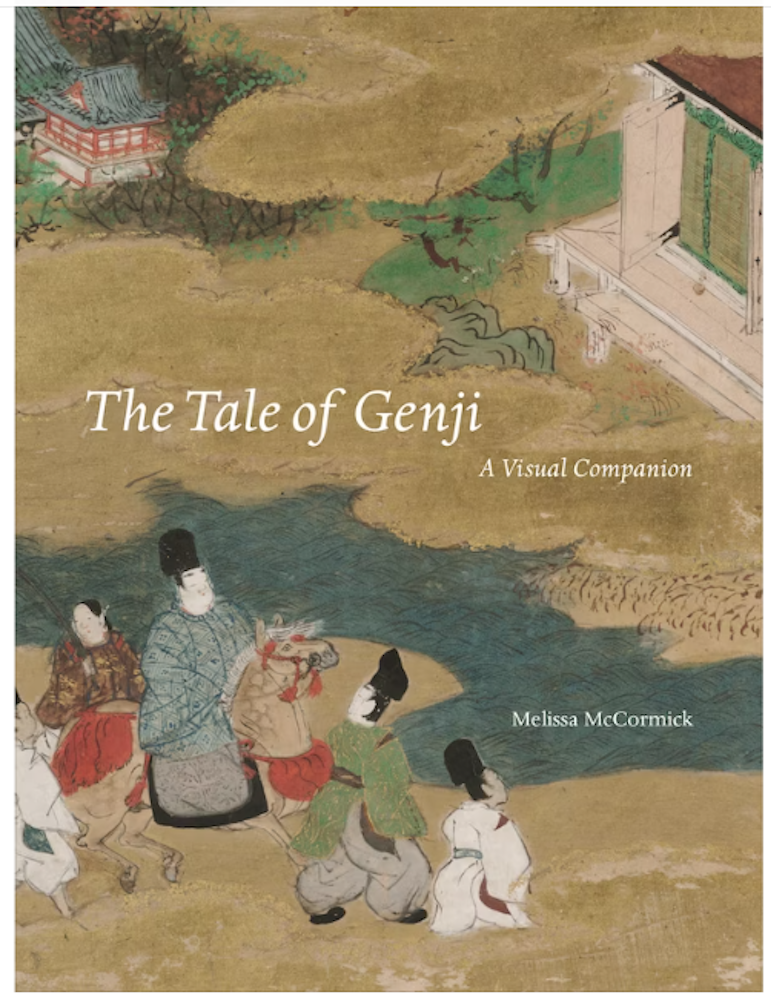
ในปี 2019 พิพิธภัณฑ์ศิลปะเมโทรโพลิแทน (MET) ของนิวยอร์กได้จัดนิทรรศการพิเศษที่เน้นเรื่องเล่าของเก็นจิที่มีมากกว่า 120 ชิ้น
นวนิยายเรื่องนี้ได้รับการอ้างอิงและพาดพิงถึงในงานวรรณกรรมต่างๆ รวมถึง Murasaki (2001) โดย Piers Anthony, ซึ่งบอกเล่าเรื่องราวของเก็นจิจากมุมมองที่ต่างออกไป
นวนิยายเรื่องนี้ยังเป็นแรงบันดาลใจให้นักเขียนและกวีคนอื่นๆ ตลอดประวัติศาสตร์ ทําให้เป็นวรรณกรรมชิ้นสําคัญที่ยังคงมีอิทธิพลต่อวัฒนธรรมและศิลปะ
เรื่องราวของเก็นจิเป็นส่วนสําคัญของวัฒนธรรมและประวัติศาสตร์ญี่ปุ่น ต่อไปนี้เป็นวิธีสัมผัสมรดกของนวนิยายในญี่ปุ่นสมัยใหม่:
The Tale of Genji ประสบกับการฟื้นฟูวัฒนธรรมในสมัยเฮอัน ซึ่งมีศิลปินและนักเขียนหลั่งไหลเข้ามายังราชสํานักในเกียวโต ปัจจุบันนักท่องเที่ยวยังคงสามารถสัมผัสความงามและความยิ่งใหญ่ของเมืองหลวงโบราณแห่งนี้ได้
สามารถเยี่ยมชมสถานที่หลายแห่งที่กล่าวถึงในนวนิยายเรื่องนี้ เช่น ศาลเจ้า Hōjōji, ศาลเจ้า Uji (แสดงด้านล่าง), และ คัตสึระ อิมพีเรียล วิลล่า, ซึ่งเป็นแรงบันดาลใจให้ฉากที่โดดเด่นที่สุดฉากหนึ่งในนวนิยายเรื่องนี้
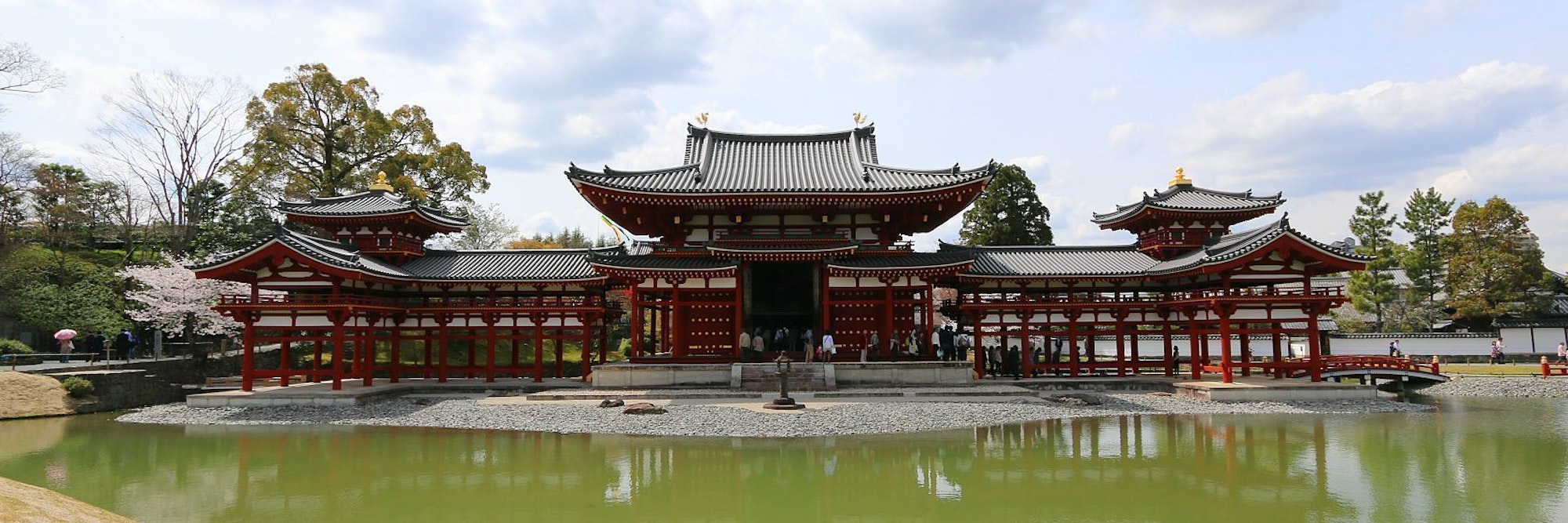
Trip To Japan มีทัวร์ที่สมบูรณ์แบบหากคุณต้องการเยี่ยมชมศาลเจ้าและพระราชวังเก่าแก่ในเกียวโต เช็คเอาท์ ทัวร์ส่วนตัวพร้อมไกด์เต็มวันไปยังพระราชวังและวัดในเกียวโต
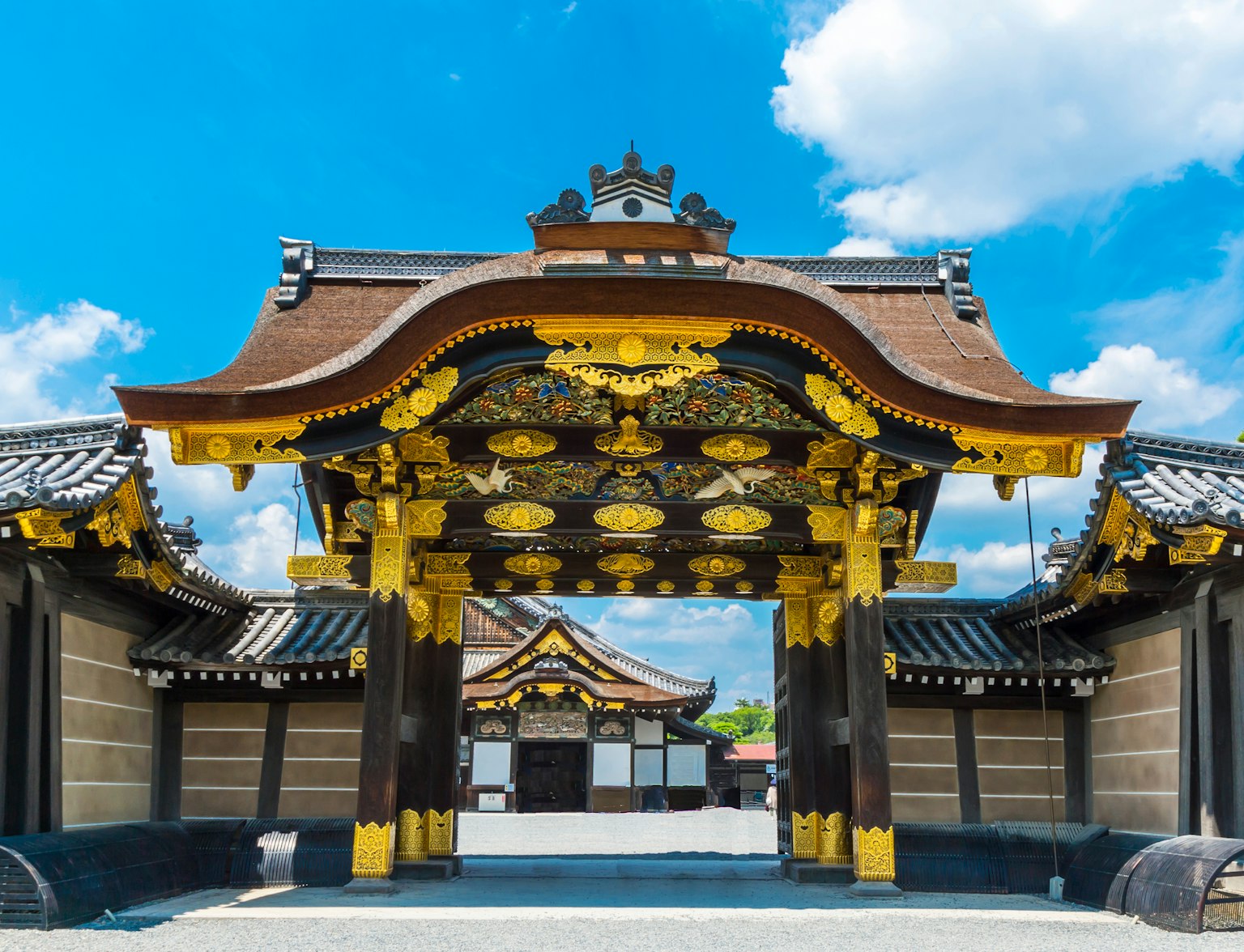
สํารวจสถานที่แนะนําที่สุดของเกียวโต
พิพิธภัณฑ์ศิลปะโทคุกาวะใน นา โก ย่า เป็นสถานที่ที่ไม่ควรพลาดสําหรับทุกคนที่สนใจสัมผัสประสบการณ์ The Tale of Genji มีม้วนหนังสือและงานศิลปะหลายชิ้นที่ได้รับแรงบันดาลใจจากนวนิยายเรื่องนี้ทําให้ผู้เข้าชมมีโอกาสได้เห็นเรื่องราวมีชีวิตขึ้นมาต่อหน้าต่อตา
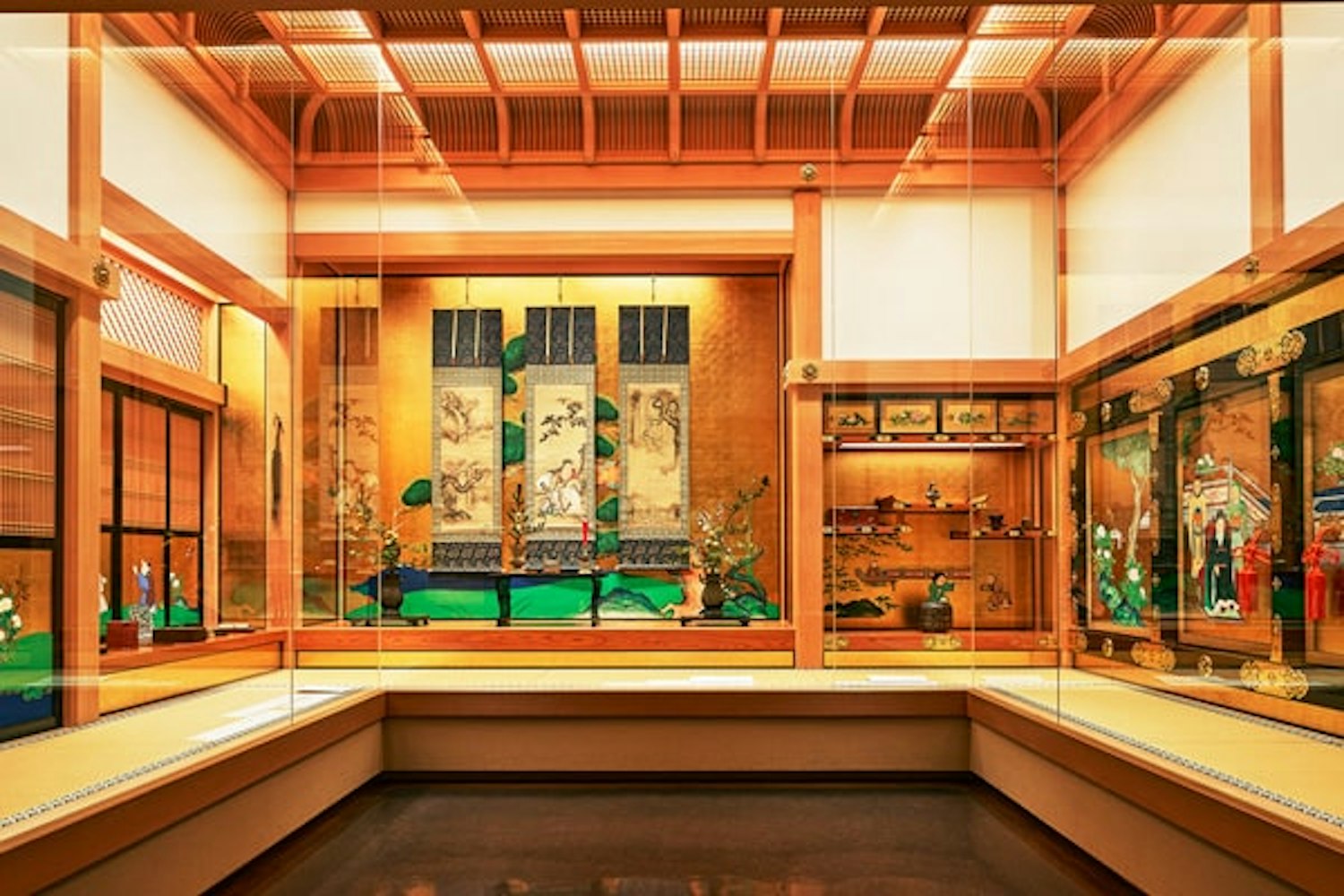
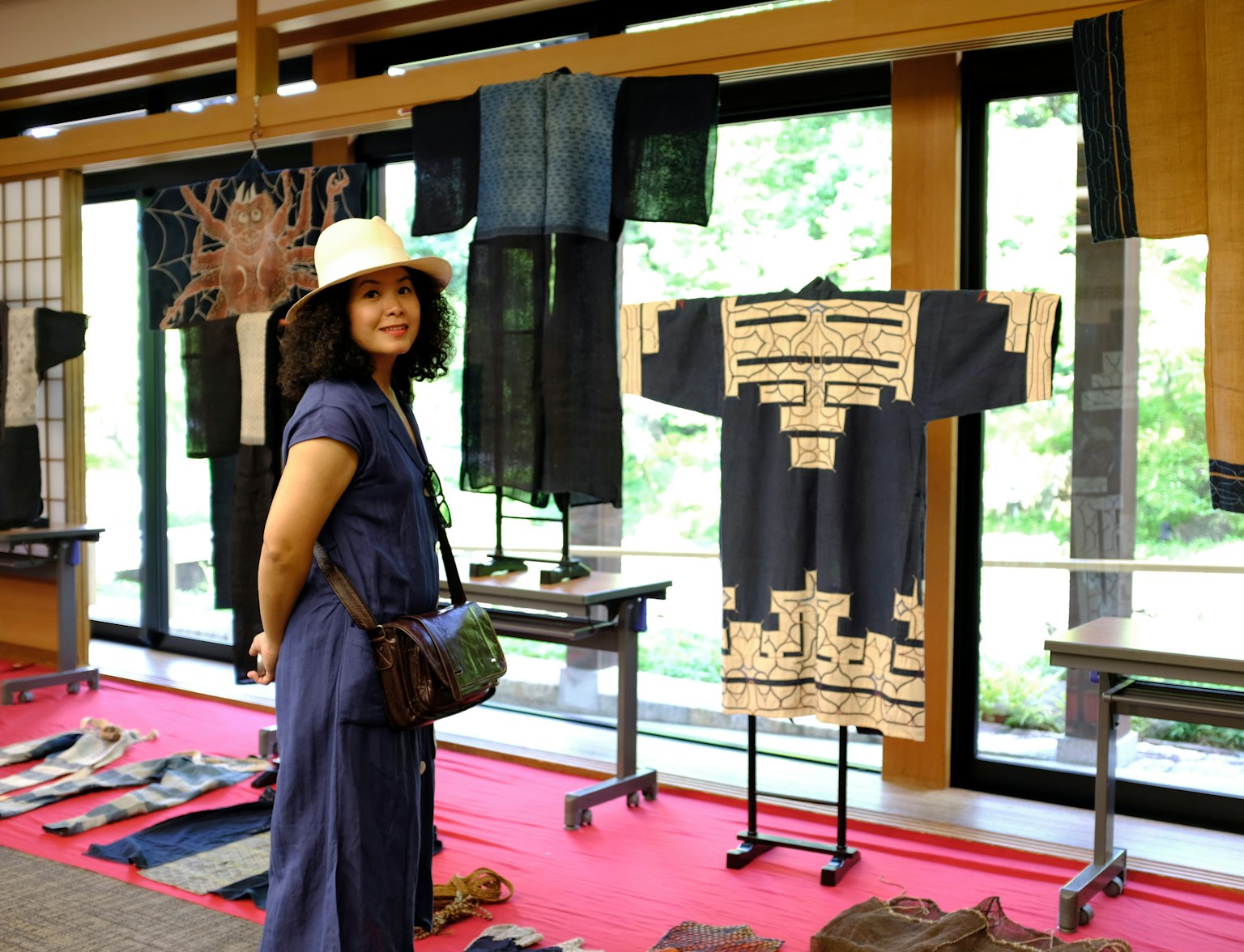
เยี่ยมชมพิพิธภัณฑ์และสวนโทคุกาวะในนาโกย่า
พิพิธภัณฑ์ศิลปะมหานครโตเกียวจัดนิทรรศการพิเศษเกี่ยวกับเรื่องราวของเก็นจิ ซึ่งจัดแสดงงานศิลปะและการประดิษฐ์ตัวอักษรหลายชิ้น พิพิธภัณฑ์ยังมีคอลเล็กชันถาวรที่มีภาพประกอบและม้วนหนังสือหายากจากนวนิยายเรื่องนี้
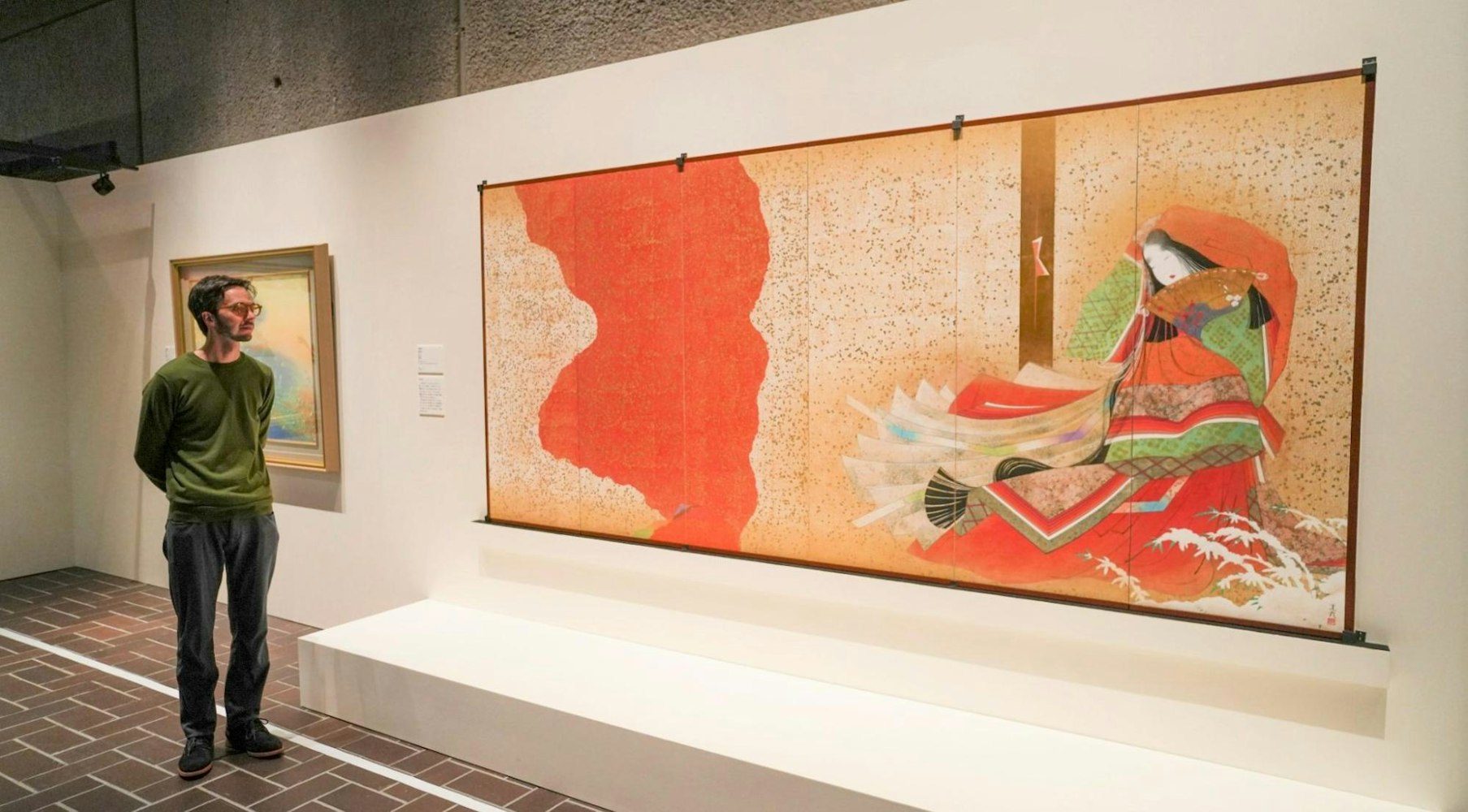
ตรวจสอบ a คําแนะนําโดยละเอียดโดย Trip To Japan เกี่ยวกับพิพิธภัณฑ์ที่ต้องไปในญี่ปุ่น

เยี่ยมชมพระราชวังและวัดในเกียวโต
เทศกาลต่างๆ ที่จัดขึ้นในญี่ปุ่นได้รับแรงบันดาลใจจาก The Tale of Genji เช่น Aoi Matsuri ในเกียวโต และสวน Heian Jingu Gyoen ของศาลเจ้า Ujigami เทศกาลเหล่านี้มอบโอกาสพิเศษในการสัมผัสวัฒนธรรมและประเพณีของญี่ปุ่นซึ่งมีรากฐานมาจาก The Tale of Genji
นวนิยายเรื่องนี้มีอิทธิพลอย่างมากต่อรูปแบบศิลปะดั้งเดิมของญี่ปุ่น เช่น การประดิษฐ์ตัวอักษร การวาดภาพ และการเย็บปักถักร้อย ผู้เข้าชมสามารถสัมผัสกับรูปแบบศิลปะเหล่านี้ผ่านเวิร์กช็อปและชั้นเรียนในสถานที่ต่างๆ ในญี่ปุ่น
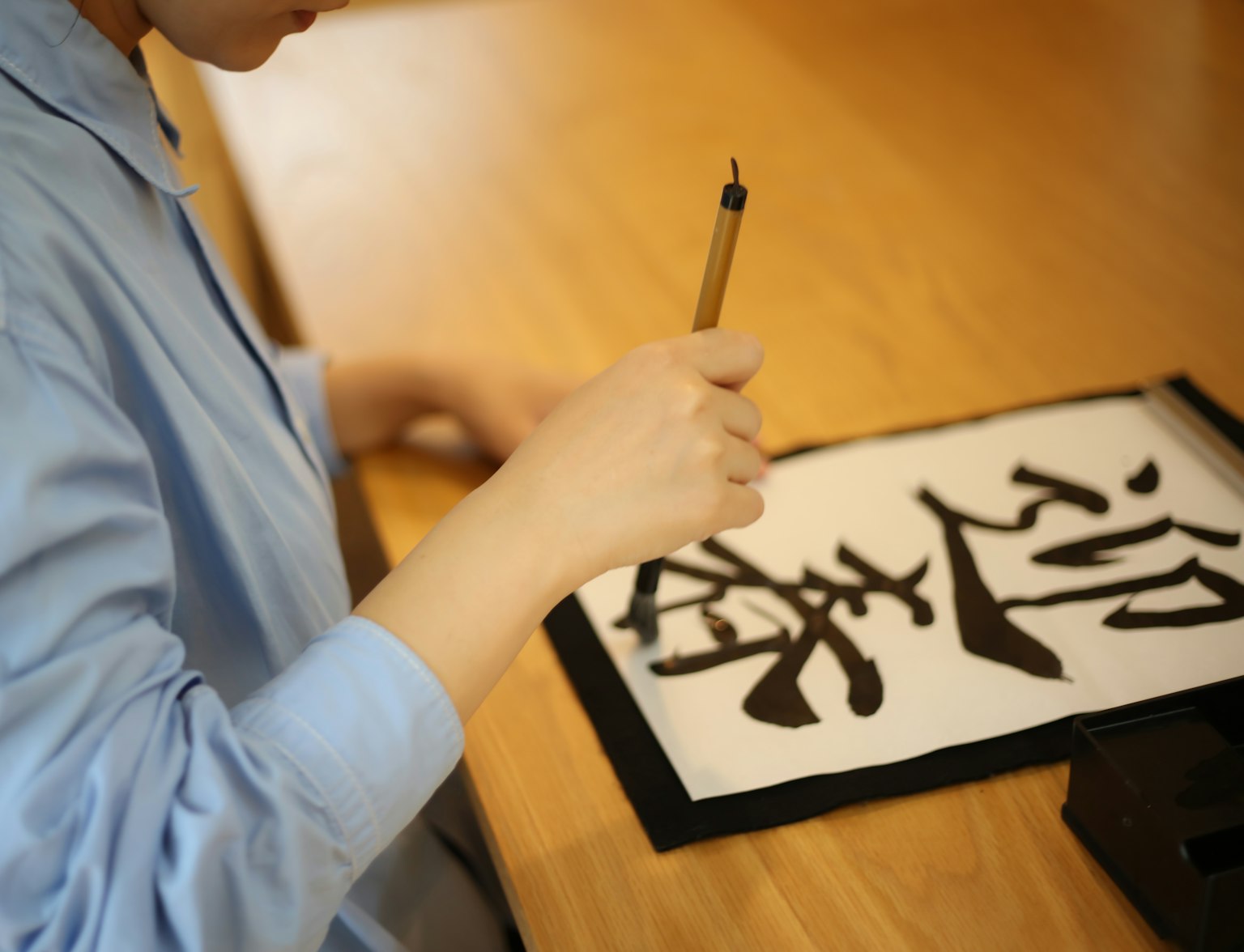
เรียนรู้วิธีการเขียนคันจิด้วยเวิร์กช็อปการประดิษฐ์ตัวอักษรนี้
แน่นอนว่าวิธีที่ดีที่สุดในการสัมผัส The Tale of Genji คือการอ่านมัน ผู้เข้าชมสามารถค้นหาคําแปลภาษาอังกฤษของนวนิยายเรื่องนี้ได้ในร้านหนังสือหลายแห่งและทางออนไลน์ การอ่านข้อความต้นฉบับช่วยให้เข้าใจวัฒนธรรม วรรณกรรม และศิลปะญี่ปุ่นอย่างลึกซึ้งยิ่งขึ้น '
หากคุณวางแผนที่จะไปเที่ยวญี่ปุ่นอย่าลืมเพิ่มเว็บไซต์ที่เกี่ยวข้องกับ The Tale of Genji ลงในรายการสถานที่ห้ามพลาดและแบ่งปันกับ การเดินทางไปญี่ปุ่น เราจะตรวจสอบให้แน่ใจว่าได้ให้ข้อมูลและความช่วยเหลือทั้งหมดที่คุณต้องการเพื่อประสบการณ์ที่ยากจะลืมเลือน Trip To Japan มีทัวร์ที่คัดสรรมาอย่างดีมากมาย แล้วพบกันที่ญี่ปุ่น!
ถัดไปแนะนําให้อ่าน - The Samurai 侍 Legacy of Japan - คู่มือฉบับสมบูรณ์
